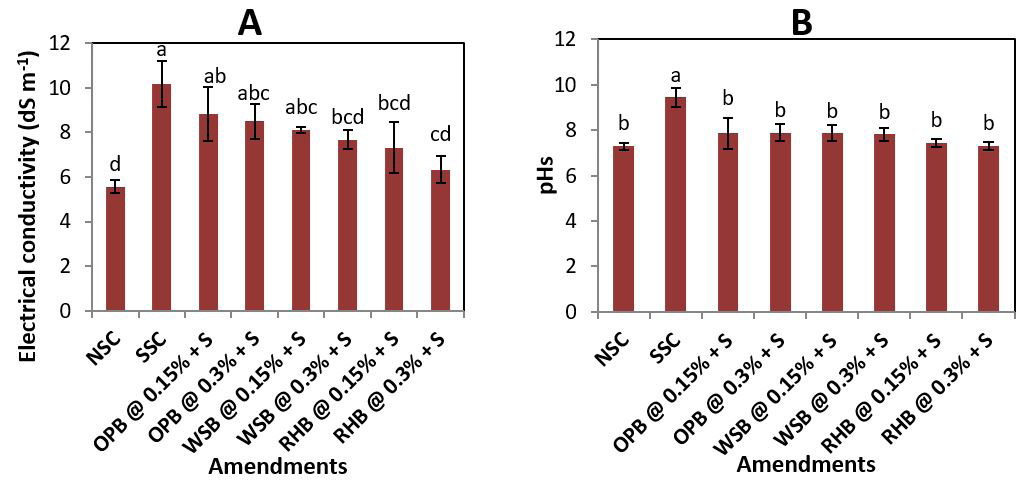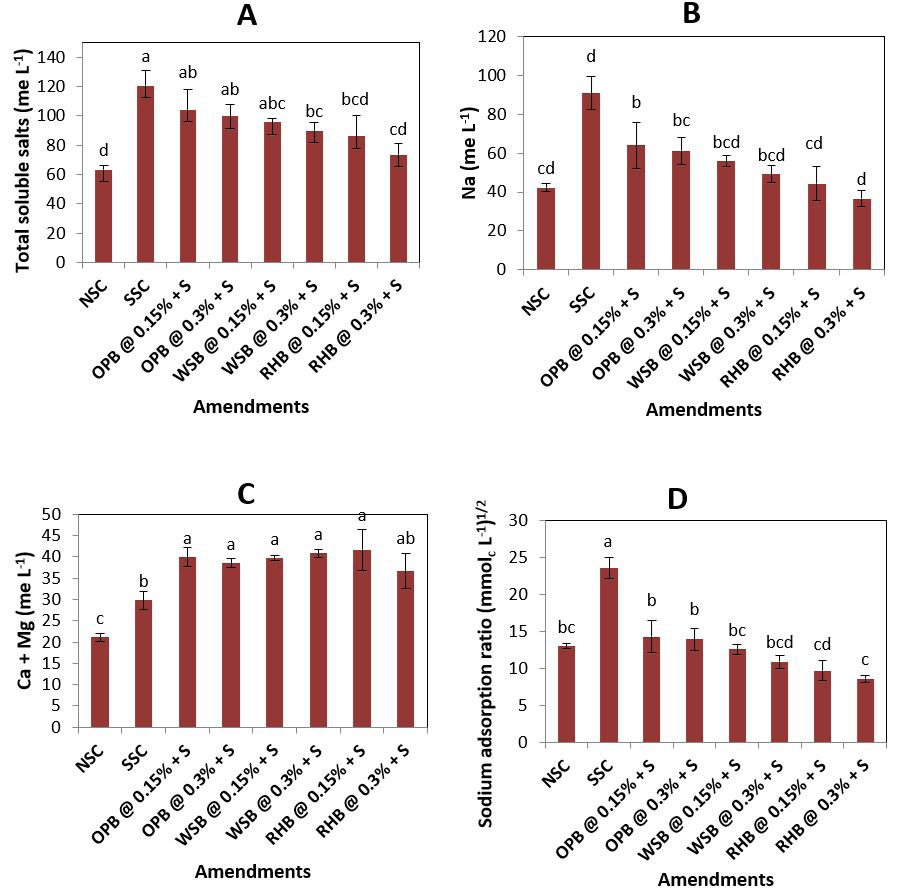Comparative Potential of Different Modified Biochar Sources on the Ionic Composition of Soil and Stress Mitigation in Maize under Saline-Sodic Conditions
Comparative Potential of Different Modified Biochar Sources on the Ionic Composition of Soil and Stress Mitigation in Maize under Saline-Sodic Conditions
Muhammad Umair1,2, Muhammad Naeem1, Asad Jamil3 and Muhammad Younas2,4*
Effect of different biochar sources on ECe and pHs values of soil under maize cultivation. Mean value of three replicates has been presented with bars showing standard error. Tukey’s HSD was used for multiple comparisons under complete randomized design. NSC: non-saline control; SSC: saline-sodic control; OPB: orange peel biochar; WSB: wheat straw biochar; RHB: rice husk biochar; S: salinization.
Effect of different biochar sources on soil ionic composition under maize cultivation. Mean value of three replicates has been presented with bars showing standard error. Least significant difference was used for multiple comparisons under complete randomized design. NSC: non-saline control; SSC: saline-sodic control; OPB: orange peel biochar; WSB: wheat straw biochar; RHB: rice husk biochar; S: salinization.









